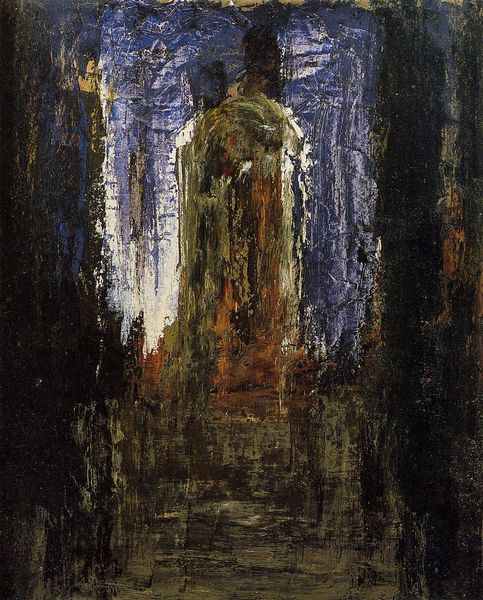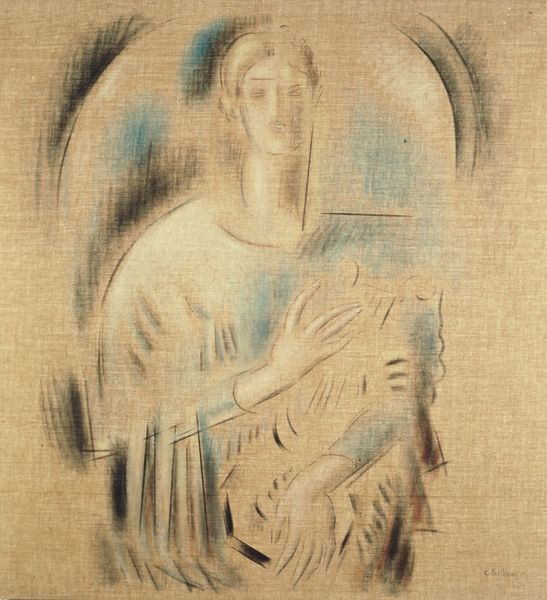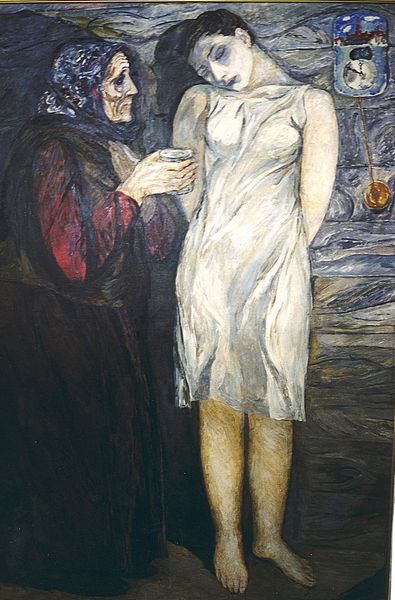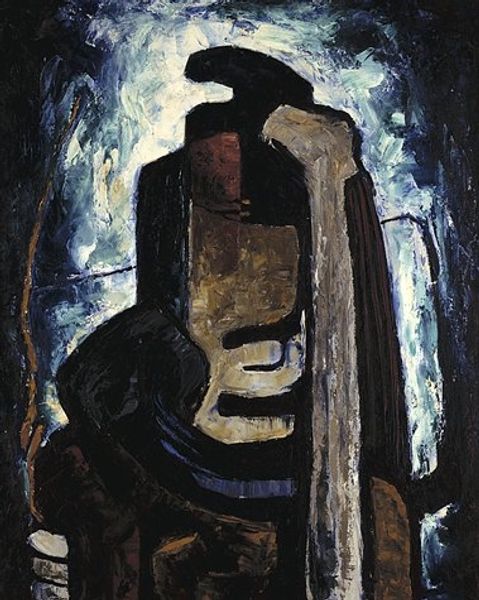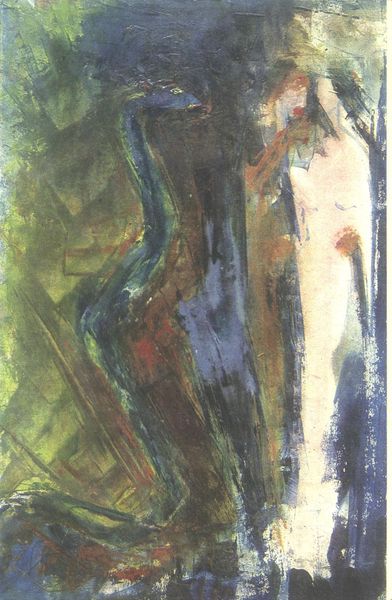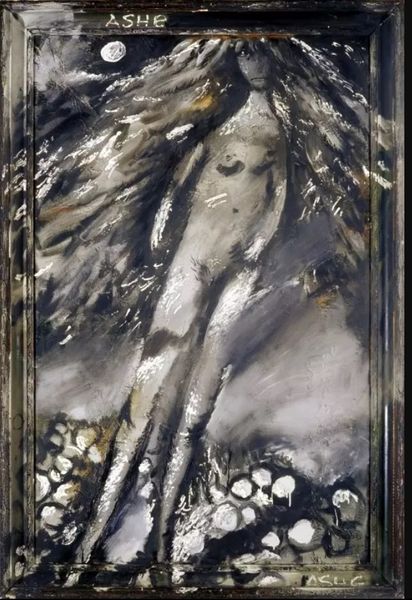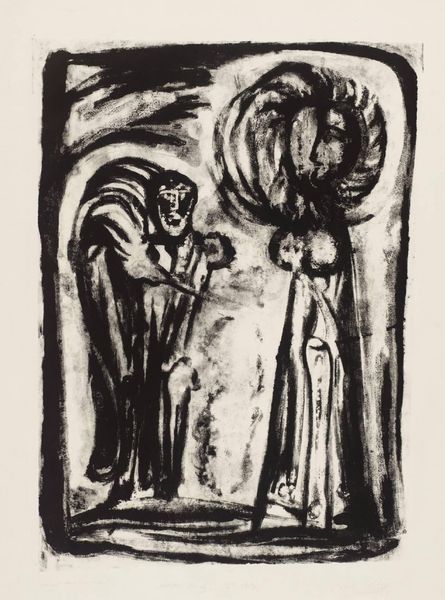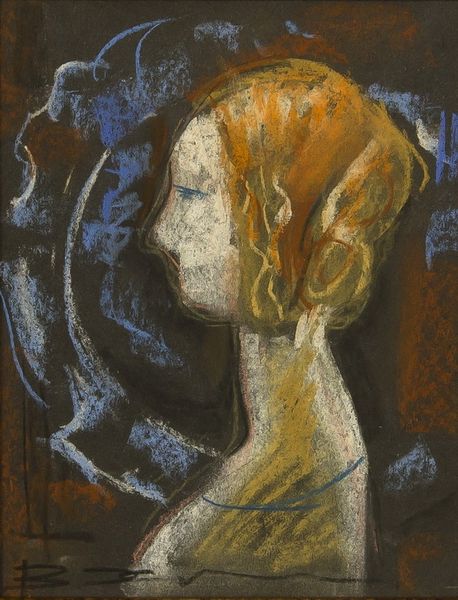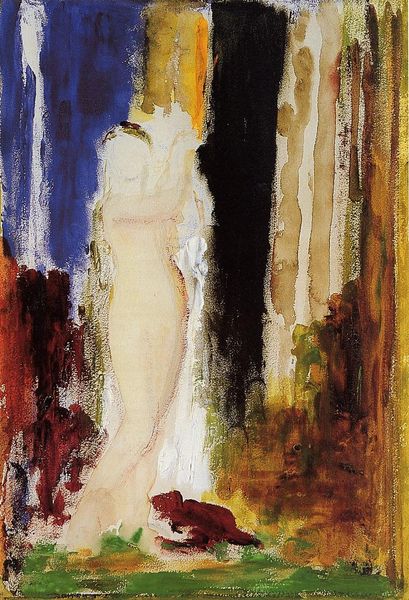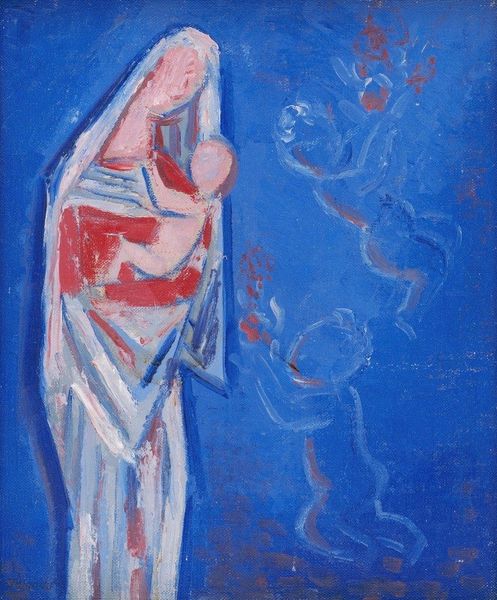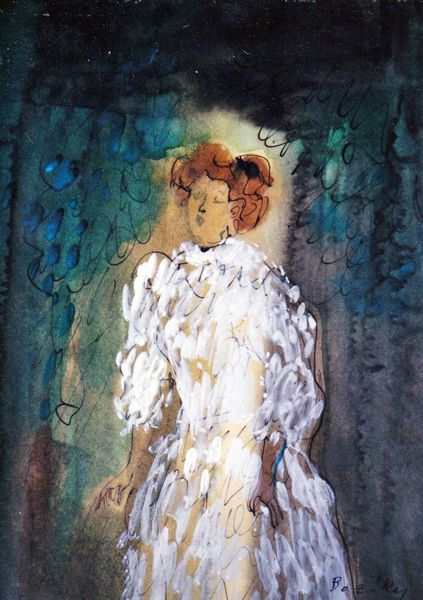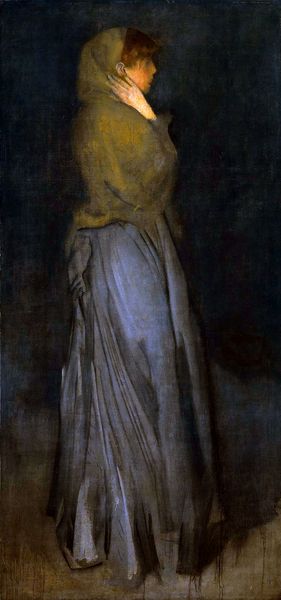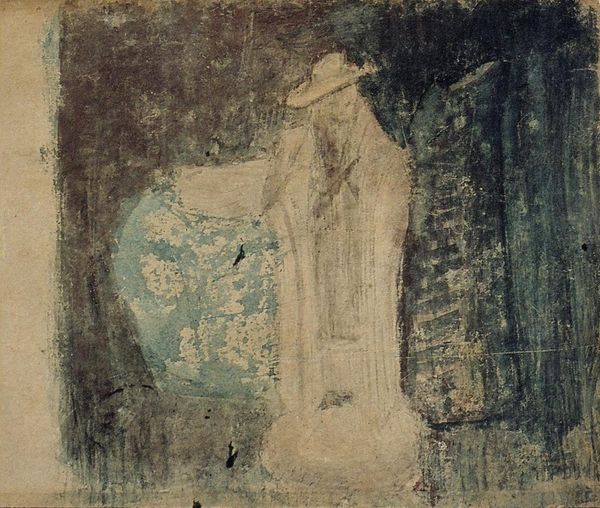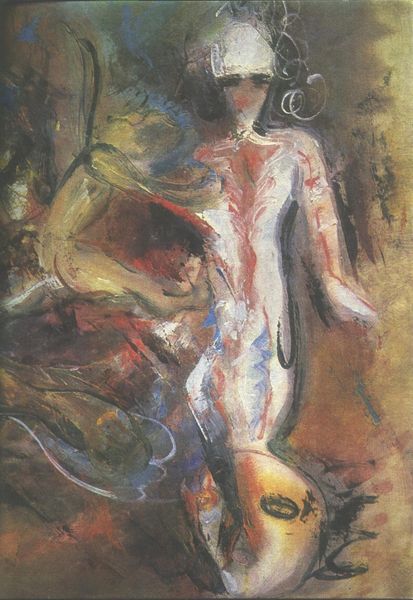
painting, oil-paint
#
portrait
#
allegories
#
narrative-art
#
painting
#
oil-paint
#
figuration
#
oil painting
#
expressionism
#
history-painting
#
expressionist
Dimensions: 63 x 48 cm
Copyright: Public domain US
Editor: Here we have Pablo Picasso's "Madonna with Garland," painted in 1904 using oil paint. There's such a melancholic feel, almost mournful, amplified by the heavy use of blues. How do you interpret this work? Curator: Picasso's Madonna is indeed steeped in melancholia, but I see it less as solely personal mourning and more as a reflection of societal anxieties around the roles and representations of women, particularly mothers, at the turn of the century. The “garland” seems almost like a cage, hinting at the constraints placed upon women, even within the idealized role of motherhood. Considering Picasso's later, often brutal depictions of women, how does this early piece resonate with your understanding of his evolving perspective? Editor: That's a chilling but fascinating connection! I'd always thought of the garland more traditionally, but framing it as a constraint, especially knowing his later work, throws everything into a new light. The blue now feels less purely sorrowful and more… oppressive. Curator: Exactly! The blue then transforms into a visual manifestation of societal expectations and limitations. It also links to the cultural moment, when debates raged about women's suffrage and access to education. Is Picasso participating in this debate or simply observing it? What do you think? Editor: Perhaps a bit of both? It feels too emotionally charged to be simple observation. He’s definitely engaging with the complexities, even if not explicitly advocating for a specific position. Curator: Precisely. He's offering a complex, ambivalent image that acknowledges the profound emotions inherent in the socially constructed role of motherhood. And by leaving it open-ended, he invites us, the viewers, to grapple with these enduring questions. Editor: I never would have considered that without your perspective! It really highlights the power of situating art within its broader cultural and political context. Thank you! Curator: It's through this kind of dialogue that art history truly comes alive. Understanding art as a product of and a participant in larger social conversations illuminates its enduring relevance.
Comments
No comments
Be the first to comment and join the conversation on the ultimate creative platform.
